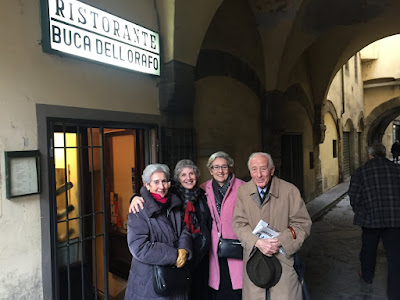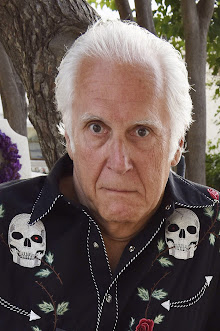Annamaria on Monday
Since the Feast of the Epiphany falls on Monday this Year, I am taking license to rerun a previous post on the subject. Here is what I and my friends in Florence will be celebrating.
January 6th, the twelfth day of Christmas, is the
traditional end of holiday celebrations in Italy. These days, many Italians call the day by the
name of the Christmas witch.
Santa Claus has taken over the role of delivering Christmas
gifts in the rest of the world, but though the old man from the North Pole can
be seen hereabouts, so also can the traditional Italian bringer of gifts—La
Befana.
In Italian folklore, La Befana, flying on a broom, comes
down the chimney and brings good children candies, fruits, and little gifts and
bad children lumps of coal. These days—Italians
being a child-friendly race—the lumps of coal are actually very dark caramels.
The name La Befana is thought to be a corruption of the word
“epiphania,” the name for the feast commemorating the visit of the three kings
to the infant Jesus. Those oriental
visitors brought the newborn baby gifts.
And their legend figures in the lore of La Befana. There are many version of her connection with
the wise men’s journey to the babe in Bethlehem. My favorite has her a loving mother whose
child has died. Following the star
leading them to Jesus, the kings from the east pass her way. Mad with grief, on hearing of the child they seek, she imagines that he is her
son. She too goes with gifts for the
child. Delighted to receive her, the
infant Jesus gives her a gift in return.
She will be the mother of every child in Italy. On the eve of January 6th every
year, she goes to every house where there is a child and leaves gifts. Like a good mother, she rewards the good
children with sweets and admonishes the bad ones with lumps of coal.
Anthropologists trace the legend of La Befana back to new-year
pagan celebrations of ancient Rome, during which gifts were exchanged and
fertility and agriculture celebrated. As
you can imagine, those New Year’s feasts had a licentious and raucous
character. Here is Ottorino Respighi’s
musical portrayal of the modern celebration in the Piazza Navona in which you will
hear echoes of those riotous Romans of old.
https://www.youtube.com/watch?v=GsLj3wlycPw
 |
| Detail of Gozzoli's gorgeous Adoration of the Magi in the Palazzo Medici-Ricardi |
Here in Florence, the city celebrates La Befana with a
parade in Renaissance costume.
I celebrated with friends at lunch in my favorite restaurant
in the world. Tortino ai carciofi, osso
buco alla fiorentina, pera carmelatta.
EXQUISITE!
The elegant gentleman in this picture, I am so sorry to have to say, has since left us. He took great pride in his native city and taught me a great deal about it. Ti manco, Marcello.


























Another little jewel from MIE that I'd never heard of: La Befana. Thanks, AmA! I trust you were treated to lots of non-coal treats...
ReplyDeleteThank you, EvKa. The friends pictured above gave me an orchid! The lunch was better than any candy. I am in Sicily now. Stand by for a tour next week.
ReplyDeleteJust so you understand this, sis. I'M SO JEALOUS! :) But keep enjoying...as I freeze my baklava off in non-florentine Washington, PA.
ReplyDeleteGrazie per questa foto che non ricordavo! Anche a noi manca Marcello ❤️
ReplyDeleteGrowing up in Catholic Québec, epiphany was a fairly big thing. We celebrated it with a cake hiding a bean in it. Now the holidays are already over, right after new year.
ReplyDelete